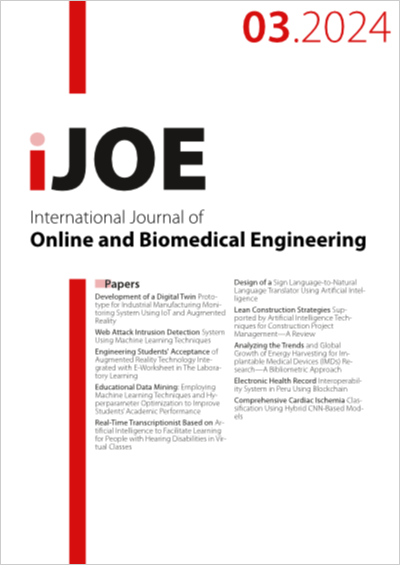Analyzing the Trends and Global Growth of Energy Harvesting for Implantable Medical Devices (IMDs) Research—A Bibliometric Approach
DOI:
https://doi.org/10.3991/ijoe.v20i03.45681Keywords:
Energy harvesting, implantable medical device, bibliometric, VOS ViewerAbstract
Implantable medical devices (IMDs) play a crucial role in improving individuals’ well-being and ensuring their safety by providing real-time health data monitoring for recovery. The use of energy harvesting (EH) technology has become increasingly popular among researchers because it offers the potential to extend the battery life of IMDs and reduce their weight. This study successfully examined the expansion of EH in the field of IMDs, the distribution of publications across different countries, and the identification of the most influential authors for potential research collaborations. A bibliometric analysis was conducted to evaluate two metrics: performance and science mapping. Data was collected from the Scopus database from the initial publications until October 2023, encompassing 250 articles published in Englishlanguage journals. The titles, keywords, and abstracts of these publications were analyzed and interpreted using VOS Viewer (version 1.6.19). Furthermore, network analysis using VOS Viewer enabled the identification of key research clusters. The findings reveal a continuous increase in EH for research on infectious and parasitic diseases over the 15-year period from 2008 to 2023. The United States and the University of Bern are recognized as the leading contributors to this field, based on their country and institutional contributions, respectively. The author with the most published papers and citations hails from China. Additionally, this study identifies several opportunities for collaboration with countries, institutions, authors, and research hotspots in EH for IMDs that benefit the reader.
Downloads
Published
How to Cite
Issue
Section
License
Copyright (c) 2023 Syifaul Fuada, Mariella Särestöniemi, Marcos Katz

This work is licensed under a Creative Commons Attribution 4.0 International License.



